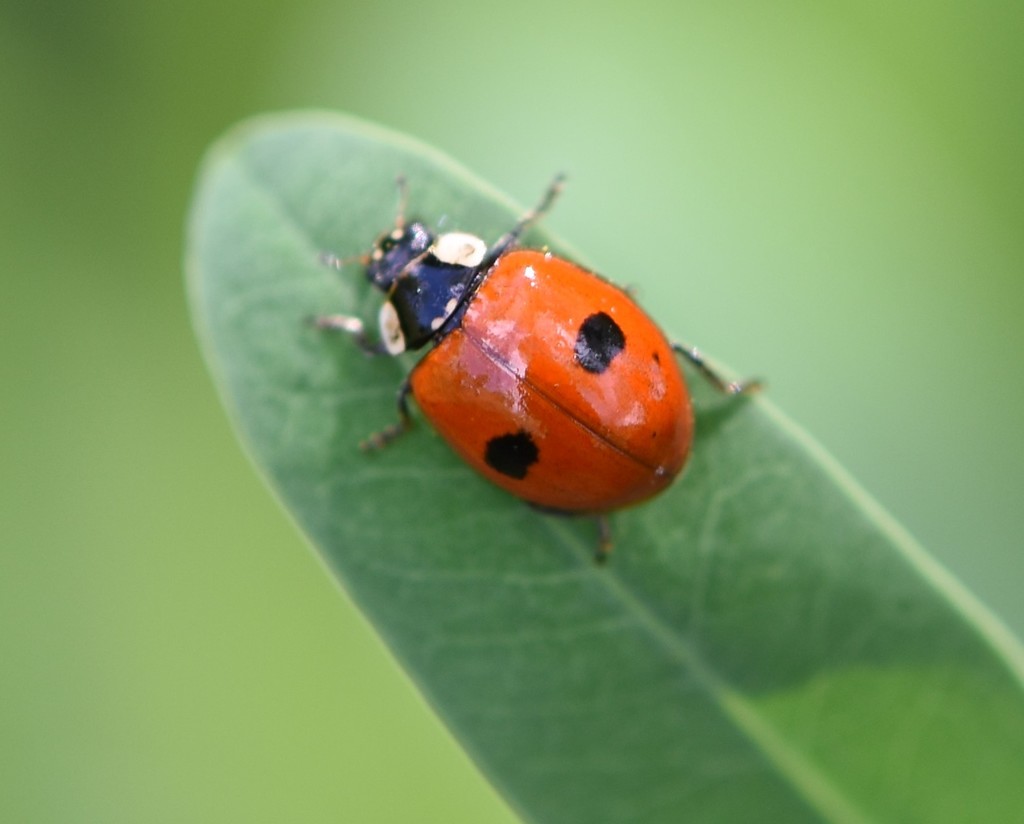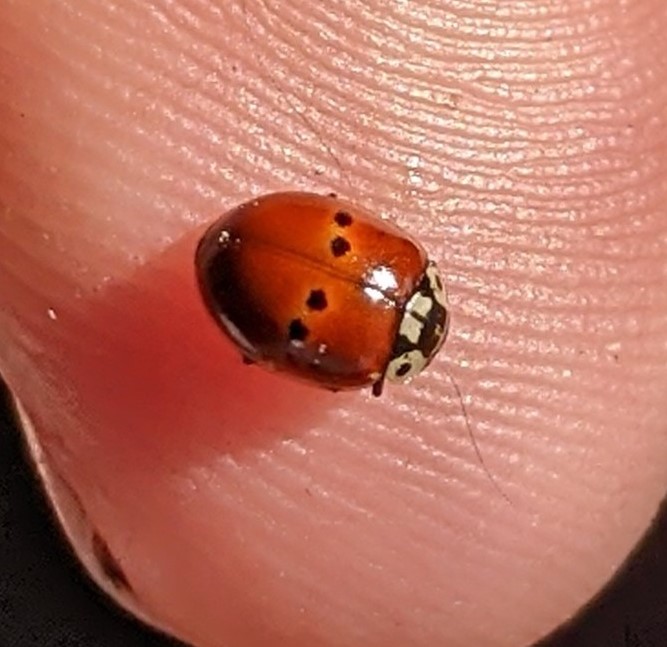The Two-spotted Lady Beetle is native to North America. Although this species’ patterns are highly variable, its most common form is red or orange with a single black spot on each wing cover. It is generally found on shrubs and trees, and is considered a prey generalist. In the U.S., this species has disappeared from much of its historic range.
Status
Native
Ranked as Imperiled in New York; Vulnerable in Indiana, Labrador, Manitoba, and the Northwest Territories; Apparently Secure in Ontario, Saskatchewan, Alberta, and Yukon; and Secure in British Columbia and New Brunswick.
The Two-spotted Lady Beetle was once one of the most common native species in North America. Currently, the Two-spotted Lady Beetle is experiencing rapid and wide-spread declines, thought to be caused by the introduction of non-native lady beetles, particularly the Seven-spotted Lady Beetle and the Asian Lady Beetle.
Last Seen
1992
Fun Fact
The Two-spotted Lady Beetle is designated a “Species of Greatest Conservation Need” in New York.
Identification
Two-spotted Lady Beetles are between 3.5 and 5.2 mm in length. Overall appearance is highly variable.
- Head: Black, with two white spots.
- Pronotum: Usually mostly black. The sides of the pronotum are mostly to completely white. There are often two small white patches in the black region of the pronotum, one against the head and one against the elytra. The pronotum can also be mostly white, with a number of black spots and a smaller central black patch.
- Elytra: Usually bright orange to red in color with two black spots, one per elytron. Elytral patterns are highly variable, sometimes containing up to 14 spots. The elytra can also be black with red spots, or red with large black patches.
- Legs: Light brown or orange to black.
- Often confused with: Asian Lady Beetle, Seven-spotted Lady Beetle, Mountain Lady Beetle, Twice-stabbed Lady Beetle, and Ursine Spurleg Lady Beetle.
Habitat
Two-spotted Lady Beetles can be found in a variety of habitats, from fields, meadows, agricultural crops, and gardens to forests and shrublands. Wooded habitats are preferred.
General Range
Current range includes the western United States and southwestern Canada, east to the coast spanning northern and northeastern United States through southern Canada. Historic range extended much further north and south, only excluding the far northern and southern regions of North America.
Food
Aphids and other small, soft-bodied insects.
Life History
Two-spotted Lady Beetles emerge in early to late spring, and mature from egg to adult in a little under a month. Maturity time is based on temperature and food availability. Adults live for one to two years. Mates are attracted through the release of a substance that can be detected by other Two-spotted Lady Beetles. Eggs are laid on the underside of leaves, protecting them from heat and predation. Two-spotted Lady Beetles will lay their eggs near prey aggregations, so they will often lay their eggs in agricultural fields if they are accessible.
More Information
You can find more information about Two-spotted Lady Beetles using the following links:
Vermont Distribution
Visit the iNaturalist Observation Map and Occurrence Records to find out where Two-spotted Lady Beetles have been seen in Vermont.








